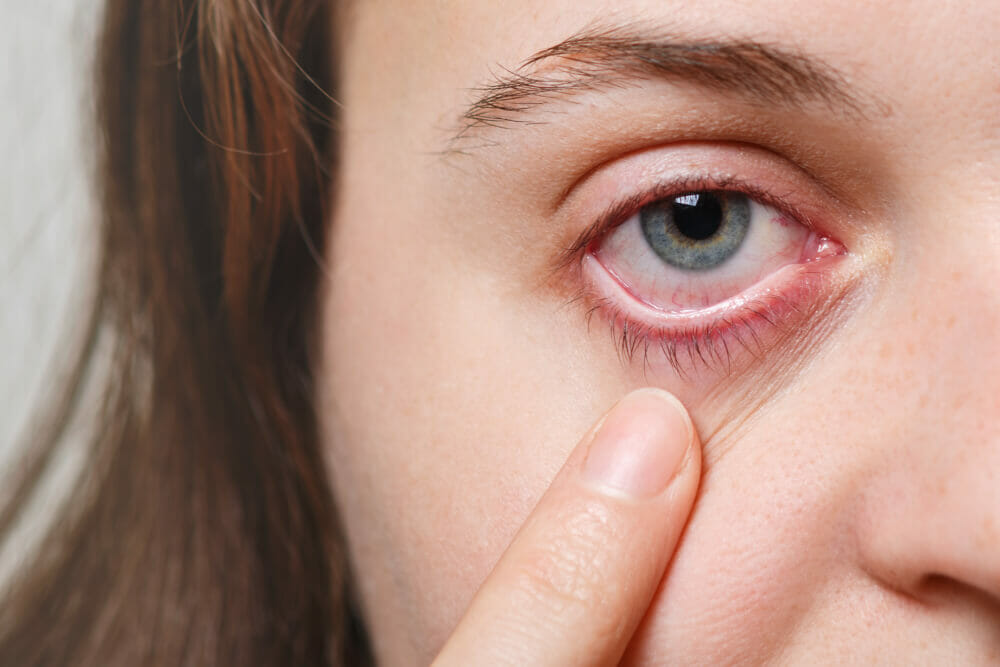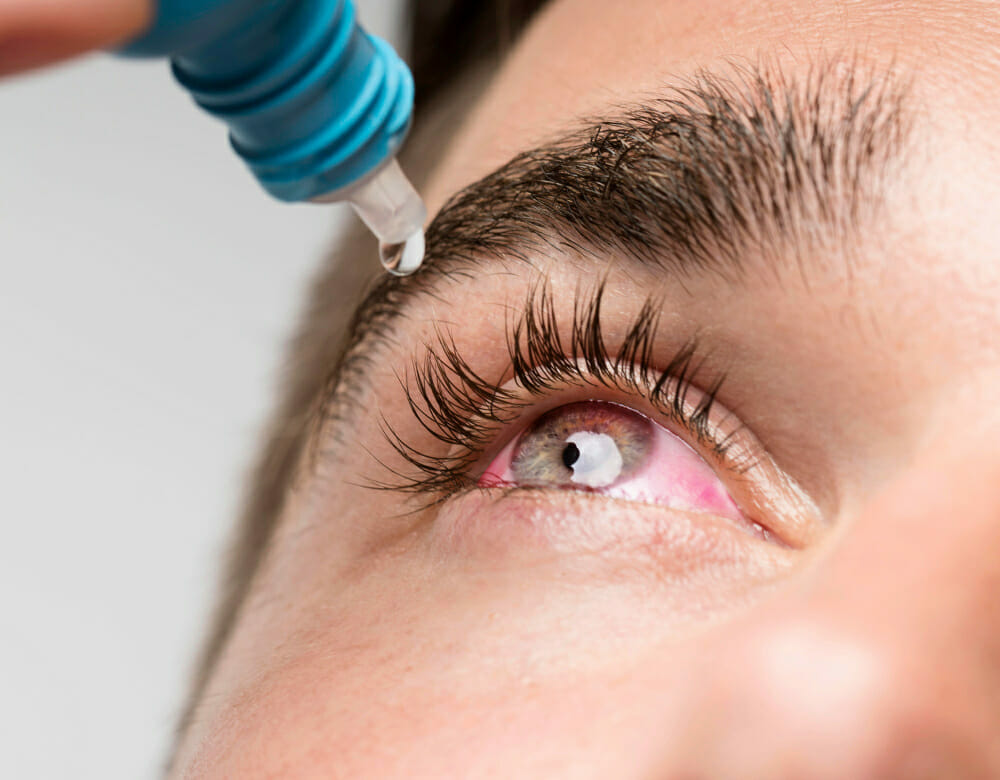How can red eyes be treated?
There are many treatments available for red eyes. The symptoms of red eyes can often be relieved by resting, applying cool compresses to closed eyes, lightly massaging the eyelids and gently rinsing the eyelids, as well as over-the-counter eye drops. If necessary, an eye doctor may prescribe antibiotics, eye drops, or ointments.
The following are treatments for specific conditions:
Red eye due to allergies:
Aside from avoiding the allergen, over-the-counter eye drops are usually used for treatment. Artificial tear drops can wash allergens from the eye and add moisture which will ease dry, itchy eyes. Decongestant eye drops reduce redness in the eyes due to allergies.
Blepharitis treatment: In most cases, it involves maintaining clean eyelids. You can relieve symptoms by dampening a washcloth with warm water, wringing out excess water, and holding it to the closed eyelids for a few seconds. You can also lightly wash the eyelid with a cotton swab dipped in a mixture of water and baby shampoo. It is important to clean the eyelids regularly once the condition arises, as it usually does not go away completely. In some cases, the eye doctor can prescribe antibiotics or steroid eye drops.
Bacterial or viral pink eye:
Place a warm, damp washcloth over the infected eye for a few minutes. This will also loosen dried mucus if your eyelashes or eyelids are stuck together. To prevent the infection from spreading, use a clean cloth each time. If the pink eye affects both eyes, use a different cloth for each eye. You can also use preservative-free artificial tears.
Mold:
When that's the case, keep your home's humidity level between 30 and 50 percent. Depending on your climate, you may need a dehumidifier. To prevent mold from growing in high-humidity areas, such as basements or bathrooms, clean them regularly.
Dry Eye:
When someone has dry eyes that are causing redness, the eye doctor will look to reduce inflammation and recreate a healthy tear film. The exact treatment will depend on the doctor's diagnosis but oftentimes involves clearing out the clogged meibomian oil glands and expression of those glands, which then provide a healthy tear film.













